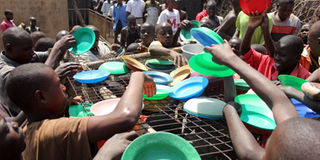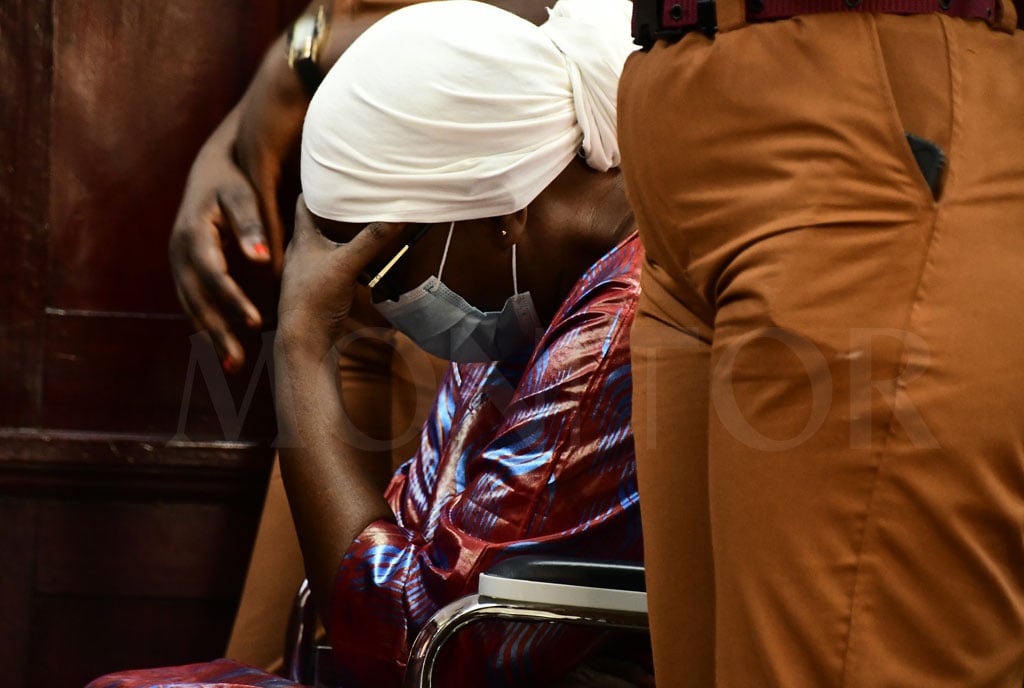Prime
Do remand homes rehabilitate children?

Children in remand homes eat three times a day and spend most of the time watching tv. PHOTO BY ABUBAKER LUBOWA
Children aged 12 - 18, who find themselves on the wrong side of the law, committing crimes that require more than just a caution, are detained in one of six remand homes gazetted for that purpose.
If awaiting trial, the offending children are placed in Fort Portal, Gulu, Mbale, Masindi, Arua, or Naguru remand homes. It is only children who have been tried and sentenced who are imprisoned at the National Rehabilitation Centre in Kampiringisa.
Incidentally, the centre, besides holding convicts, also houses street children picked off the streets of Kampala.
But are remand homes rehabilitative?
According to Mondo Kyateka, assistant commissioner for Youth and Children Affairs in the Ministry of Gender, Labour and Social Development, the time a child spends on remand is not enough to develop a curriculum for them.
“Their time on remand is not stable. Some children can be on remand for months, while others spend only days there, so we cannot provide a lot of training for them. In the remand homes, we only give soft skills such as understanding religion and playing games, to keep the children busy.”
The children also watch TV, eat three meals a day, and get guidance from counsellors.
However, once children are sentenced and transferred to Kampiringisa, they have an opportunity to engage in vocational training provided by NGOs, such as carpentry, electronics, farming and plumbing.
Medical facilities almost nonexistent
According to a review, Juvenile Detention in Uganda: Review of Ugandan Remand Homes and the National Rehabilitation Centre, carried out in 2010, by Marianne Moore, the commonest diseases are malaria, stomach problems, headaches, and wounds. In addition, Karimajong street children in Kampiringisa tend to have skin diseases.
“We try our best, within the resource envelop, to treat the children,” Kyateka says, adding, “We offer children in remand homes preliminary healthcare, such as first aid, and none of them has died. Where first aid cannot handle the illness, they are referred to clinics and hospitals in the community.”
Naguru Remand Home has a sickbay, but children are also referred to the China-Uganda Friendship Hospital in Naguru, Mulago hospital, or Nsambya hospital depending on the gravity of the situation.
Kyateka adds that, “The Kampiringisa Centre has a fully-fledged health centre III to cater for the convicted children.”
The 2010 review also found that there are no psychosocial supports offered to help children with drug addiction problems.
Offences that are prevalent
In remand homes, children detained are charged with both capital and petty offences. According to the 2010 review the most common offences for children in remand homes, especially in Gulu Remand Home, was defilement, aggravated defilement, murder, and arson.
In Naguru Remand Home, the commonest offences were defilement, aggravated robbery, murder, manslaughter, and non-capital offences such as theft, assault, and damage to property.
In Kampiringisa, the common offence among street children is petty theft.
The numbers
Generally, the number of girl child offenders in a remand home is lower. But due to the nature of the crimes and their stay in remand homes, the number of juvenile delinquents in detention in Uganda keeps on fluctuating.
In 2014, for instance, at a given time, Naguru Remand Home had 130 children, 12 of whom were girls. At the same time, 85 of the children were capital offenders while 40 were remanded on petty offences.
The low number of girls in remand homes makes them vulnerable to sexual predation, especially from male delinquents who have been detained for defilement.
Also, the fact that capital offenders live with petty criminals questions the nature of rehabilitation the latter group gets from the remand homes.
The Statistics
In 2014, a total of 1,779 juveniles were involved in crime with the highest numbers charged as follows:
S/No Crimes Juveniles accused
1 Defilement 418
2 Thefts 323
3 Assaults 208
4 Breakings 13
5 Robberies 66
Source: Uganda Police Annual Crime Report 2014




